
Kimchi is a traditional Korean dish that has been gaining popularity worldwide due to its unique flavor and health benefits. Made by fermenting vegetables with a blend of spices and seasonings, kimchi is a staple in Korean cuisine and is often used as a condiment or side dish. However, like any fermented food, kimchi can go bad if not stored properly or left to ferment for too long.
Knowing how to tell if kimchi is bad is essential for avoiding food poisoning and maintaining the quality of the dish. Signs that kimchi has gone bad include changes in color, texture, and smell. The most common indicator of spoiled kimchi is a sour or rancid smell, which is caused by the growth of harmful bacteria. Other signs of spoilage include a slimy texture, a darkening of the color, and the presence of mold.
In this article, we will go over the different ways to tell if kimchi is bad and how to store it properly to extend its shelf life. Whether you are a kimchi lover or a first-time eater, understanding the signs of spoilage will help you enjoy this delicious dish safely and confidently.
Table of Contents
Understanding Kimchi
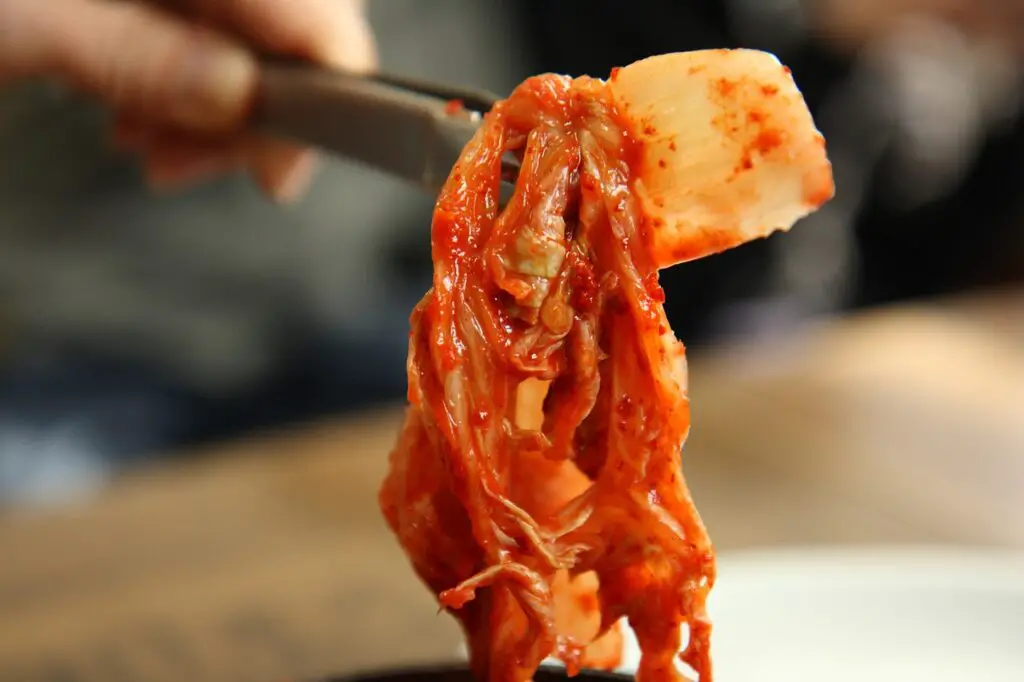
Kimchi is a traditional Korean staple that has been around for centuries. It is a type of fermented vegetable dish that is made with a variety of ingredients, including cabbage, napa cabbage, radish, garlic, ginger, and peppers. Kimchi is a popular dish in Korean cuisine and is enjoyed by many people around the world.
Fermented foods, such as kimchi, have become increasingly popular in recent years due to their reported health benefits. Fermenting vegetables is a process that involves the use of beneficial bacteria to break down the sugars and starches in the vegetables, producing lactic acid and other compounds that give the food its unique flavor and texture.
Kimchi can be made in many different ways, with different ingredients and levels of spiciness. Some people prefer their kimchi to be more mild, while others like it to be very spicy. Seasoned kimchi is also available, which has been fermented for a longer period of time and has a more complex flavor.
It is important to note that while kimchi is generally considered safe to eat, it is possible for it to go bad. Signs that kimchi may have gone bad include a sour or off smell, a slimy texture, or a change in color. If you are unsure whether your kimchi is still good to eat, it is best to err on the side of caution and discard it.
The Fermentation Process
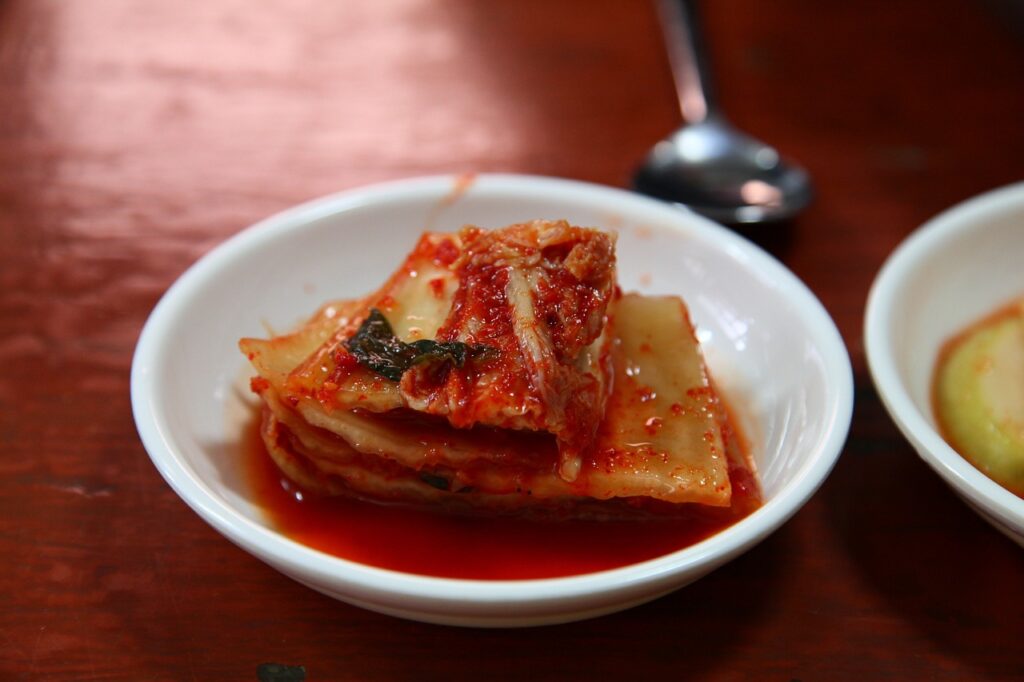
Kimchi is a fermented food that is made from vegetables and spices. The fermentation process is what gives kimchi its unique sour and tangy flavor. During the fermentation process, lactic acid bacteria break down the natural sugars in the vegetables and produce lactic acid. This lactic acid gives kimchi its sour taste.
The fermentation process begins when the vegetables are mixed with salt and left to sit for a period of time. This allows the salt to draw out excess water from the vegetables and create a brine. The brine helps to create an environment that is conducive to the growth of beneficial bacteria.
Once the brine is formed, lactic acid bacteria begin to grow and multiply. These bacteria convert the natural sugars in the vegetables into lactic acid. This process can take anywhere from a few days to several weeks, depending on the temperature and humidity.
As the fermentation process continues, the kimchi will develop a sourer taste and tangy flavor. The longer it ferments, the more sour and tangy it will become. The fermentation process can also cause the kimchi to become more pungent and spicy.
It is important to note that while the fermentation process is what gives kimchi its unique flavor, it can also be the cause of spoilage. If the kimchi is left to ferment for too long, or if it is not stored properly, harmful bacteria can begin to grow. This can cause the kimchi to become slimy, discolored, or foul-smelling. If this occurs, it is best to discard the kimchi and start over.
How to Store Kimchi Properly

Storing kimchi properly is crucial to ensure its freshness and prevent it from going bad. Here are some tips on how to store kimchi properly:
- Refrigerate: Kimchi should be stored in the fridge to slow down the fermentation process. This will help maintain its flavor and texture for longer.
- Shelf life: Kimchi can last for several months when stored properly in the fridge. However, its shelf life may vary depending on the ingredients used and the fermentation process.
- Store-bought: Store-bought kimchi usually comes in airtight containers or jars. It is recommended to keep them in the fridge to maintain their freshness.
- Airtight container: When storing homemade kimchi, it is best to use an airtight container to prevent air exposure. This will help maintain its flavor and texture for longer.
- Room temperature: Kimchi should not be left at room temperature for too long as it can spoil quickly. It is recommended to store it in the fridge as soon as possible.
- Earthenware: Traditional earthenware pots are commonly used to store kimchi. However, it is important to make sure they are airtight and stored properly in the fridge.
Overall, storing kimchi properly can help maintain its flavor and texture for longer periods. It is recommended to store it in the fridge in an airtight container, whether it is store-bought or homemade.
Recognizing Spoiled Kimchi
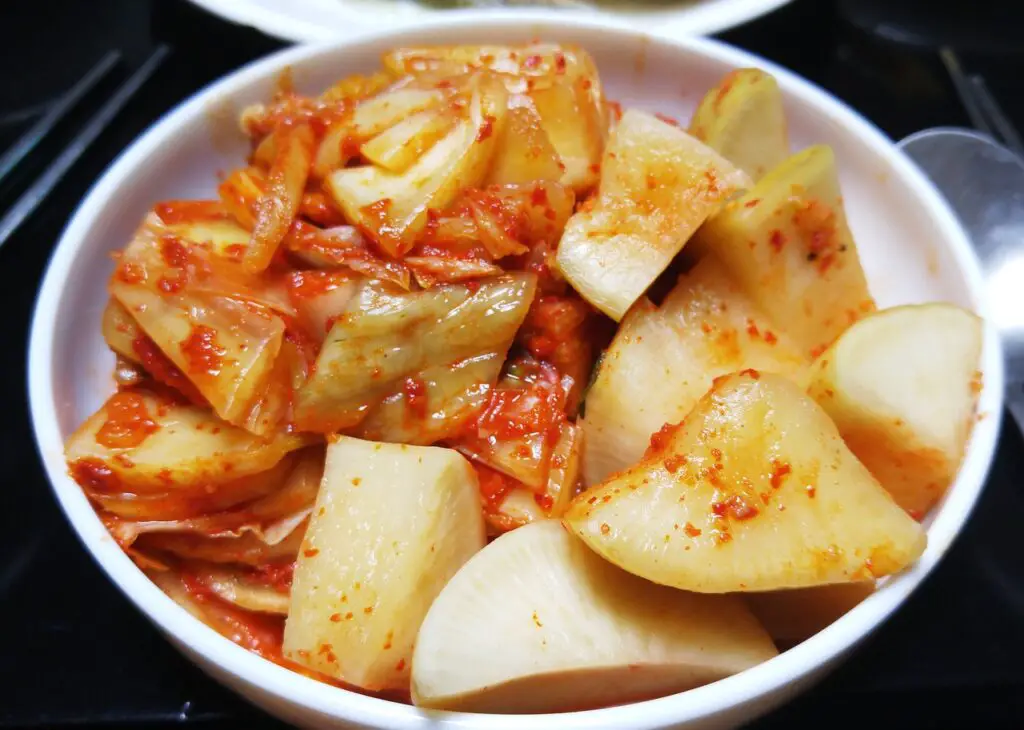
Kimchi is a fermented food that can last for months when stored properly in the refrigerator. However, sometimes even properly stored kimchi can go bad. Here are some signs to look for to tell if kimchi is spoiled:
Appearance
The appearance of kimchi can give you some clues about whether it has gone bad. If you see mold growing on the surface of the kimchi, it is a sign that it has spoiled and should be discarded. Additionally, if the color of the kimchi has changed significantly from its original bright red color, it may have gone bad.
Smell
Kimchi has a distinct smell due to the fermentation process, but if it smells overly sour or rancid, it may have spoiled. If the smell is too strong or unpleasant, it is best to discard the kimchi.
Taste
The taste of kimchi can also indicate whether it has gone bad. If the kimchi tastes overly sour, bitter, or has a strange taste, it may have spoiled. If the taste is not what you are used to, it is best to err on the side of caution and discard the kimchi.
Texture
Kimchi should have a crisp texture and should not feel slimy or mushy. If the texture is slimy or mushy, it may have spoiled and should be discarded.
In summary, if you notice any mold growth, a significant change in color, an overly sour or rancid smell, a strange taste, or a slimy or mushy texture, your kimchi may have spoiled and should be discarded.
Changes in Taste and Texture
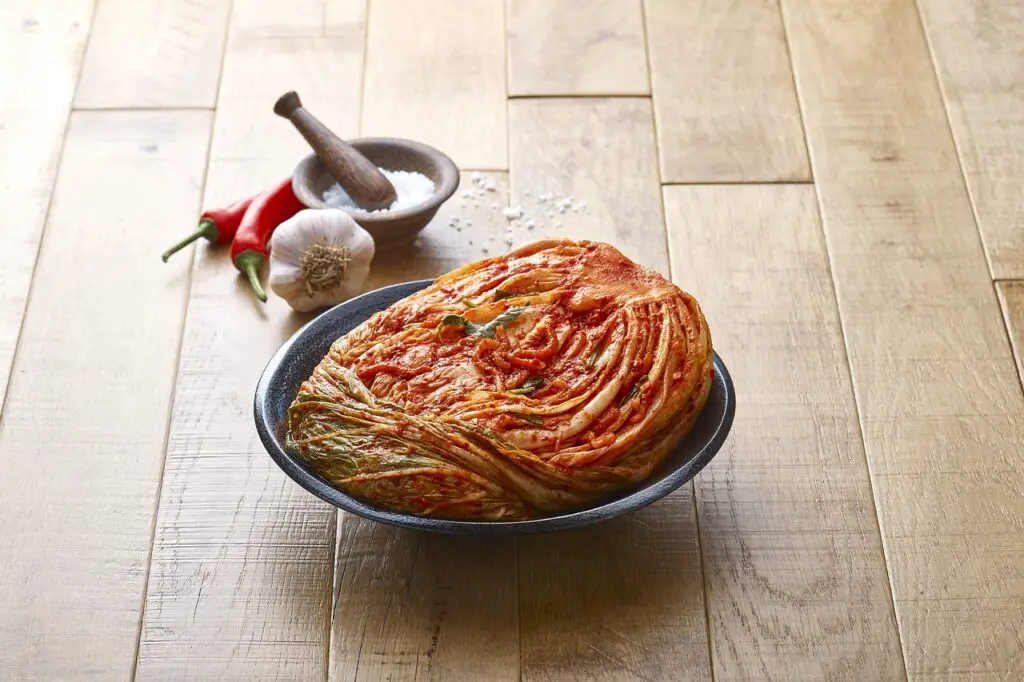
When it comes to determining whether kimchi has gone bad, changes in taste and texture are some of the most reliable indicators. Over time, kimchi will naturally ferment, resulting in a sour and tangy flavor. However, if the sourness becomes too overpowering or unpleasant, it may be a sign that the kimchi has gone bad.
Similarly, the texture of kimchi can also change as it ferments. Fresh kimchi will have a crunchy texture, but as it ages, it may become mushy or slimy. If the texture becomes too mushy or slimy, it may be a sign that the kimchi has spoiled.
In addition to changes in taste and texture, the aroma of kimchi can also be a good indicator of whether it has gone bad. While kimchi will naturally have a pungent aroma, if the smell becomes too strong or unpleasant, it may be a sign that the kimchi has gone bad.
It’s important to note that everyone’s preference for kimchi flavors and textures may vary. Some people may prefer a milder flavor and crunchier texture, while others may enjoy a stronger, more pungent flavor. Ultimately, it’s up to the individual to determine whether they find the taste and texture of their kimchi to be acceptable.
Overall, changes in taste and texture can be reliable indicators of whether kimchi has gone bad. It’s important to trust your senses and use common sense when determining whether to consume kimchi that may be past its prime.
Potential Health Risks
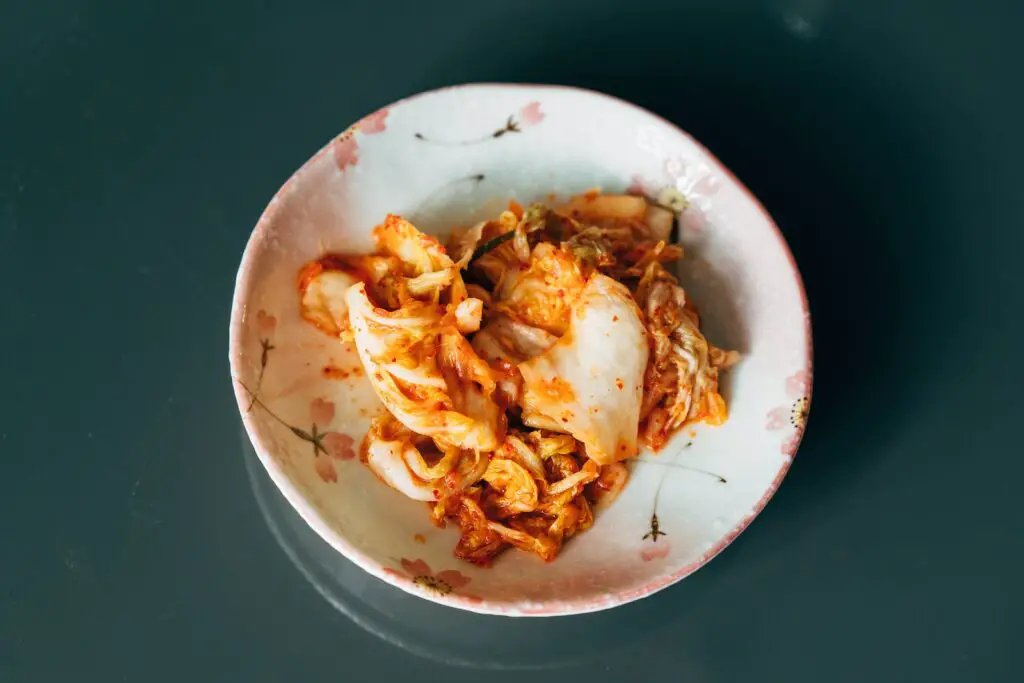
While kimchi is generally considered a healthy food, there are potential health risks associated with consuming it if it has gone bad.
One of the main concerns is food poisoning. Kimchi that has been contaminated with harmful bacteria such as E. coli or Salmonella can cause serious illness. Symptoms of food poisoning may include nausea, vomiting, diarrhea, and abdominal pain. In severe cases, hospitalization may be required.
It is important to note that not all bacteria in kimchi are harmful. In fact, some of the bacteria found in kimchi are beneficial and can improve gut health. However, if the balance of healthy bacteria is disrupted, harmful bacteria can multiply and cause illness.
Consuming spoiled kimchi may also negate any potential health benefits associated with the food. Kimchi is known for its high levels of vitamins and antioxidants, but if it has gone bad, these nutrients may be lost or reduced.
To avoid potential health risks, it is important to properly store and handle kimchi. This includes keeping it refrigerated and consuming it before the expiration date. If kimchi smells sour, has an off color, or has a slimy texture, it is best to discard it.
Additional Considerations
When it comes to determining whether kimchi has gone bad, there are a few additional considerations to keep in mind.
One important factor is the use of clean utensils. When handling kimchi, it’s important to use utensils that have been thoroughly cleaned and are free from any contaminants. This can help prevent the growth of harmful bacteria and ensure that the kimchi remains safe to eat.
Another consideration is the use of sterile techniques when making homemade kimchi. Sterilization can help kill off any harmful bacteria that may be present and prevent spoilage. This can be done by boiling utensils and jars before use, or by using a sterilizing solution.
Oxygen can also play a role in the spoilage of kimchi. When opening and closing the container, it’s important to minimize the amount of oxygen that enters. This can be done by pressing down on the kimchi to submerge it in the brine, or by using a container with an airtight seal.
It’s also important to pay attention to any odors or off-flavors that may be present in the kimchi. If the kimchi smells or tastes off, it may be past its prime and should not be consumed.
Additionally, kimchi should not be used as a side dish for pickles or other pickled foods, as this can increase the risk of contamination. Similarly, kimchi should not be used in recipes that require warmer temperatures, as this can also increase the risk of pathogens.
Overall, by following these additional considerations, it is possible to ensure that kimchi remains safe to eat and does not spoil.